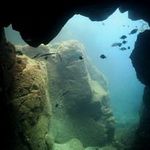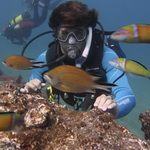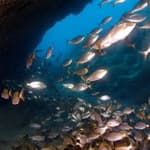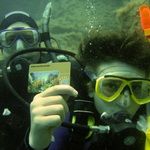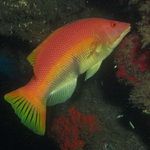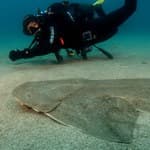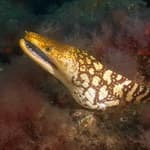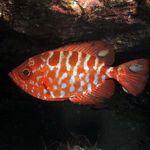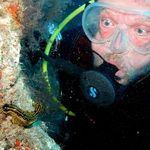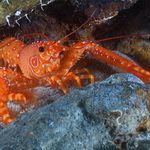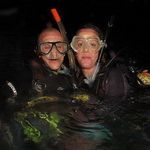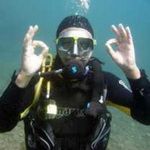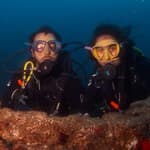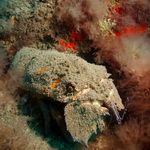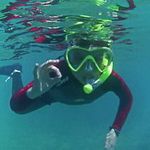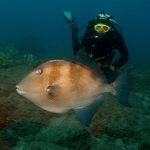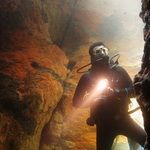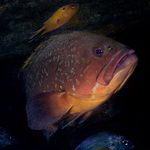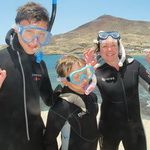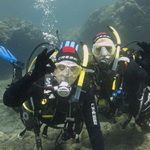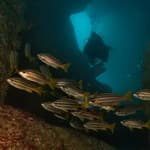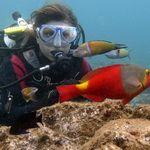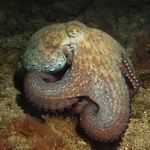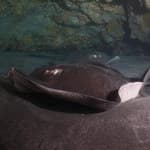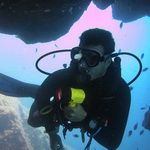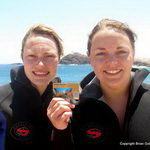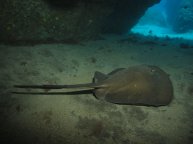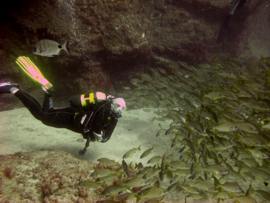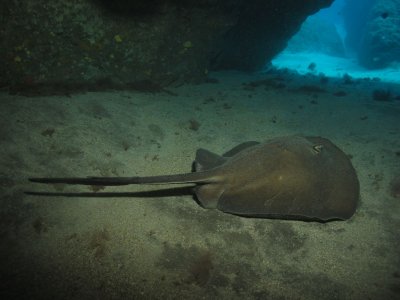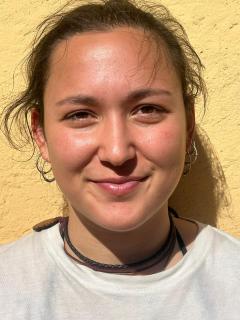RESULTS OF A 2 YEAR ANGEL SHARK SURVEY BY "DAVY JONES DIVING" IN THE ISLAND OF GRAN CANARIA.
Krupskaya Narváez1, 3, Filip
Osaer1, 3, Brian Goldthorpe2,
Eduardo Vera2 and Ricardo Haroun1
1BIOGES Centro de Investigación en
Biodiversidad y Gestión Ambiental, Facultad de Ciencias del Mar.
Universidad de Las Palmas de Gran Canaria. Campus de Tafira s/n,
35017, Las Palmas de G. C. España.
2DAVY JONES DIVING, Calle Luis Velasco 39, Playa de
Arinaga, 35118 Aguimes, Las Palmas de G. C. España.
3SQUALUS, Fundación colombiana para la investigación y
conservación de tiburones y rayas. Carrera 64 A No. 11 A-53,
Cali, Colombia.
krupska@gmail.com, filiposaer@gmail.com y
webinfo@DavyJonesDiving.com
INTRODUCTION
The dive centre "Davy Jones Diving" is collecting data of their interactions with the angel shark Squatina squatina in the Island of Gran Canaria in order to contribute to the study of habitat use of this critically endangered species (IUCN, Morey et al., 2006).
RESULTS

During the period of May 2006 until August 2008, a total of 271 angel sharks were sighted in 1709 dives. 244 of these interactions took place in the coastal area of "El Cabron". The months with the highest likelihood of sightings were January 2007 and February 2008, although sightings remained high from December to June, in both years (Fig. 1). After being rarely seen during autumn, a sudden peak in sightings occurs when the temperature drops below 21 oC. The sightings remain high until the temperature raises again over 21 oC (Fig. 2). Up to 3 sharks were spotted in one dive during the months of May 2007 & 2008, December and February 2007. 9% of the sightings were juveniles.
It is difficult to identify the sex of the sharks which are fully covered with sand and also from juveniles without causing a lot of stress to them. Therefore, the sex could only be determined in 41% of the cases. The overall sex distribution is 1: 1,6 (female, 61 : male, 38). Males were only seen between November and May, while females were seen all year round. Both sexes are found in similar depth ranges (2.5 - 30 m), but were usually seen around 9 m of depth.
The sharks are normally found solitary (98%) and also while resting on the bottom (85%) of which 80% were buried in the sand. In rare occasions they were found on rocky outcrops. Only during the colder months (November to June) they were encountered while swimming (15%), of which 70% were males. Also during this period, 40% of the resting males were found uncovered and only 28% of the females.
Generally angel sharks do not react (79%) to the presence of the divers. They remain in their resting position or continue swimming their course, even if this is towards the divers. Only 21% did not appreciate the attention of the group and swam away and in 1 case the reacting shark turned towards one of the divers.
CONCLUSION
This study was able to find a regular pattern in the sightings of the common angel shark in the "El Cabron" coastal area. The sharks can be seen throughout the year, but the colder months (temperatures below 21 oC) have the highest likelihood of sightings. Also, during this period, most of the sightings are in relative shallow waters (9 m) and close to the coastline (less than 50 m). Peaks in sightings can change over the years depending on the sea conditions (temperature). Juveniles were found both during the day and at night, throughout the year and without showing a preference for temperatures or months.
Although the preference of the sharks is laying on the bottom and being fully covered with sand, they were also found during the colder months while being uncovered and while swimming. Proportionally, males were more often found while swimming and not covered with sand than females, indicating that males are more active or more mobile than females during these months.
One anecdote revealed interesting information about the feeding behavior during the day. In May 2008, a male shark which was found buried, released its prey while swimming away from the divers. The released lizardfish swam away quickly, indicating that it had been captured recently. This shows that the angel sharks, even though while buried in the sand during the day, are alert for capturing prey and are not asleep as assumed by many.
Finally it is also worth to emphasize that 3 male angel sharks were freed from fishing nets found between 6 and 12m of depth.
ACKNOWLEDGEMENTS
We are very grateful to: Annette Goldthorpe, Andy Batty, Jim Darby, Johan Rust, Hector, Natalie Craig, Pablo Naranjo Garcia, Ron van der Linden, Uwe Gohr and all the other staff and guests of the "Davy Jones Diving Centre" for their continuous recording of the interactions with angel sharks. The 'Agencia Española de Cooperación Internacional' (AECI-MAE) for the, funding of Ph D of Krupskaya Narváez and The Shark Foundation.
BIBLIOGRAPHY
Morey, G., Serena, F., Mancusi, C., Fowler, S.L., Dipper, F.
& Ellis, J. 2006. Squatina squatina. In: IUCN 2007.
2007 IUCN Red
List of Threatened Species. . Downloaded on 29 September 2007

